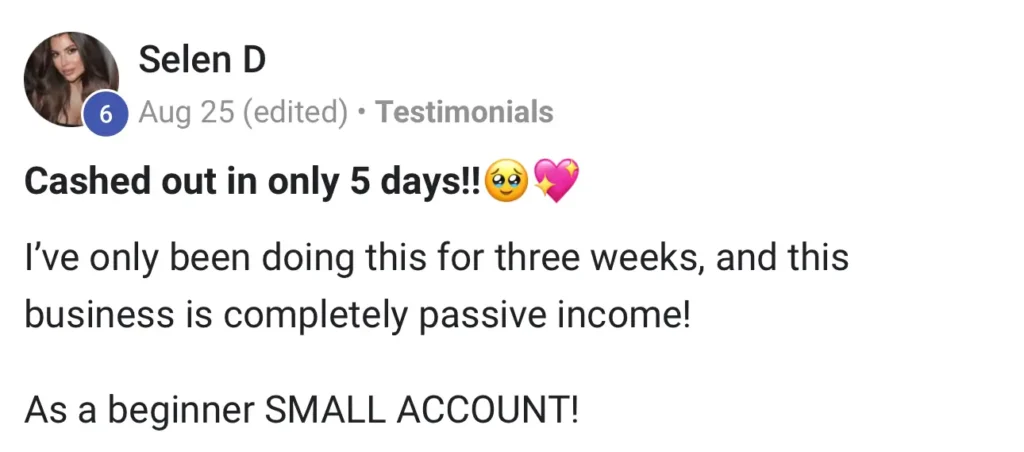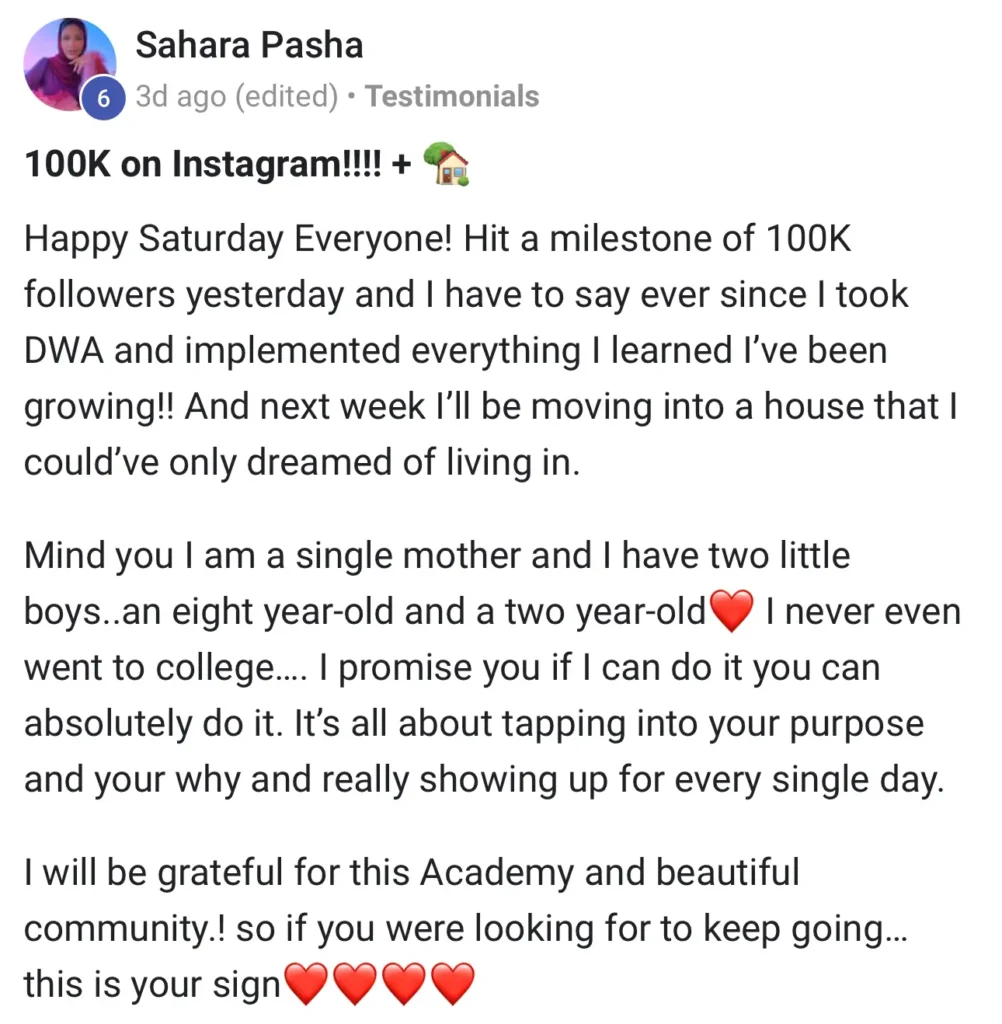Are you tired of living paycheck to paycheck?
Do you dream of building a safety net for the future?
Starting a savings challenge can be the first step towards achieving your financial goals.
By using a budget planner and understanding your budgeting finances, you can create a manageable plan.
This plan fits your financial situation, making it easier to stick to and achieve your savings goals.
I will guide you through a simple yet effective savings challenge.
This challenge will help you save money and secure your financial future.
Table of Contents
Key Takeaways
Create a personalized savings plan using a budget planner
Track your progress effectively to achieve your savings goals
Make saving money a manageable and achievable task
Understand the importance of budgeting finances
Start your savings journey with a simple and effective challenge
Why I Started My Own Savings Challenge?
I started my savings challenge after a big wake-up call about my spending.
It made me see how important it is to budget finances well for financial freedom.
My Financial Wake-Up Call
A big financial problem woke me up.
It made me see I needed to change my spending ways.
I looked for saving money tips to get my finances back on track.
First, I made a budget.
I tracked my spending, found where I could save, and set aside money for savings.
Setting My First Savings Goal
Knowing my finances, I set a savings goal.
I picked a certain amount to save in a set time.
I broke it down into smaller goals.
- Assessed my current financial situation
- Identified areas for cost-cutting
- Set a specific, achievable savings goal
These steps helped me start a successful savings challenge.
I’m getting closer to financial freedom.
Understanding the Power of a Savings Challenge
A savings challenge changes how you handle money.
It helps you save and learn to manage money better.
Good money saving techniques are key to a savings challenge.
They show you where to cut costs and save more.
The Psychology Behind Savings Challenges
Savings challenges work on your mind and money habits.
They help you think about spending more carefully.
By choosing savings challenge ideas that match your life, you can improve your money habits.
Setting goals and tracking your progress boosts your motivation.
It makes good money habits stick.
How Challenges Create Lasting Financial Habits
Savings challenges make saving a regular part of your life.
By adding budgeting to your daily routine, saving becomes easy.
As you keep up with your savings challenge, saving will become natural.
This lets you save money better and reach your financial goals.
Learning about savings challenges can lead to a safer financial future.
My Simple Savings Challenge Explained
I’ve made a simple savings challenge for you.
It helps you save money, no matter how much you make.
This challenge is easy to follow and fits your budget.
The Basic Framework
The challenge is simple.
You save money in small chunks.
This could be weekly, biweekly, or monthly.
The goal is to save regularly.
For example, saving $1000 in a year is doable.
Break it down into smaller amounts.
This makes saving easier.
Customizing the Challenge to Your Income
This challenge is flexible.
It works for anyone, no matter their income.
For those with less money, a biweekly savings plan is great.
It matches pay schedules.
To make it your own, look at your income and spending.
See how much you can save without feeling poor.
Here are some tips:
- Check your budget to find ways to save more.
- Set up automatic savings to make it easier.
- Use the 50/30/20 rule to guide your savings.
Weekly vs. Biweekly vs. Monthly Approaches
Choose how often you save based on what works for you.
Some like saving weekly to stay consistent.
Others prefer biweekly or monthly.
A biweekly plan is good for those with less money.
It matches pay schedules.
Monthly savings might be easier for some.
Find a savings plan that you can keep up with.
Try different ways until you find what works.
Adjust as your money situation changes.
By using my simple savings challenge, you can build a strong savings habit.
You’ll reach your financial goals.
Getting Started: Preparing for Your Savings Challenge
Starting your savings journey is exciting.
But first, you need to prepare well.
I’ll show you how to get ready for your savings challenge.
Assessing Your Current Financial Situation
First, know where you stand financially.
Look at your income, what you spend, your debts, and savings.
Creating a budget planner helps you see your money better.
It shows where you can save more.
This step is about being honest with yourself.
It’s the first step to saving more.
Setting Up a Dedicated Savings Account
After knowing your finances, open a savings account just for your challenge.
This keeps your savings separate from your daily money.
Choose an account with good interest and low fees.
Creating Your Savings Tracker
A savings goal tracker helps you keep track of your savings.
You can use a spreadsheet, an app, or a notebook.
Pick what works for you and use it.
Tracking your savings regularly shows your progress.
It keeps you motivated and helps you stay on track.
By doing these steps, you’re ready to start your savings challenge.
Saving money is a journey, not just a goal.
Stay committed, and you’ll reach your financial goals.

a free beginner’s guide
DWA Sneak Peek
Understand what DWA is all about and find out if it’s the right course for you
Setting Realistic Savings Goals
Setting realistic savings goals is key to a successful savings challenge.
It helps you make a clear plan for saving.
This way, you can move closer to financial freedom step by step.
It’s important to know the difference between short-term and long-term goals.
Short-term goals might be saving for a trip or an emergency fund.
Long-term goals could be for retirement or paying off a mortgage.
Short-Term vs. Long-Term Goals
Knowing the difference between short-term and long-term goals is important.
Short-term goals give you quick motivation.
They help you start saving.
Long-term goals keep you focused on your big dreams.
The SMART Goal Framework for Savings
To make sure your savings goals work, use the SMART goal framework.
Your goals should be Specific, Measurable, Achievable, Relevant, and Time-bound.
For example, a SMART goal could be “I will save $1,000 in 6 months by saving $167 each month.”
Visualizing Your Savings Milestones
Seeing your savings milestones is a great way to stay motivated.
Break down big goals into smaller steps.
This lets you see your progress and celebrate your wins.
By setting realistic goals and using the SMART framework, you can keep moving forward.
Whether it’s for a special event or long-term financial security, clear goals are essential for success.
Popular Savings Challenge Ideas That Work
There are many savings challenges to help you save more money.
I’ll show you some effective ones.
These challenges are fun and help you get into good money habits.
They fit different budgets and goals.
Savings challenges are flexible and adaptable.
They work for short-term goals or long-term wealth.
Let’s look at some popular ones that have helped many people.
The 52-Week Money Saving Challenge
The 52-week money-saving challenge is easy and effective.
You save an amount equal to the week number.
For example, save $1 in week one and $52 in week 52.
By year’s end, you’ll save $1,378.
The No-Spend Challenge
The no-spend challenge helps you spend less on things you don’t need.
For a month, don’t buy non-essential items.
It shows where you can save money.
The 30-Day Savings Sprint
The 30-day savings sprint is a quick challenge.
It helps you start saving fast.
Save as much as you can for 30 days by budgeting tightly.
The Spare Change Challenge
The spare change challenge saves your loose change.
Count it at the end of the month.
It’s a simple way to save and teaches kids about saving.
Using a savings challenge app can make saving easier.
Apps help track your progress and keep you motivated.
They offer many challenges and tools for saving.
In summary, these savings challenges offer many options.
Choose one that fits your financial situation and goals.
They help you develop good saving habits and reach your financial goals.
The Digital Wealth Academy
EARN 85% AS AFFILIATE
Biweekly Savings Plans for Low-Income Earners
Even with a tight budget, you can save money.
A biweekly savings plan helps you save a little each time.
It’s a good way for those with low incomes to start saving.
Making Savings Work on a Tight Budget
When you earn less, saving is key.
A biweekly plan means saving a set amount every two weeks.
It’s a way to save without feeling stressed.
First, look at your budget to see how much you can save.
Use the 50/30/20 rule to guide you.
It suggests saving 20% of your income, but even 10% is better than nothing.
Micro-Saving Techniques That Add Up
Micro-saving means saving a little bit often.
You can save coins, cut costs, and use employer-matched savings.
These small steps can make a big difference in your savings.
For instance, saving $5 a day adds up to $1825 a year.
It’s not a lot, but it’s a start.
It’s all about making saving a habit.
Building Momentum with Small Wins
Consistency and patience are key to saving.
Celebrate your small victories to stay motivated.
Every milestone, no matter how small, is a step forward.
With a biweekly plan and micro-saving, you can reach your savings goals.
Stay committed, and you’ll be amazed at what you can do.

a FREE beginner’s guide (no email required)
DWA Sneak Peek
Understand what DWA is all about and find out if it’s the right course for you.
Discover multiple business models and how to create multiple income streams.
NO email address is required, just click below to get your PDF.
Digital Tools to Supercharge Your Savings Challenge
To boost your savings challenge, use digital tools.
They make saving easier and fun.
You can save more with the right tools.
Savings Challenge Apps Worth Trying
Many savings apps can help you reach your goals.
They let you set targets and track your savings.
These apps keep you motivated and on track.
- Savings apps: Apps like Qapital, Oportun, and Chime offer cool features. They help you save automatically and set your own goals.
- Budgeting apps: Apps like Credit Karma, You Need a Budget (YNAB), and Empower help manage your money. They keep you updated on your savings.
Spreadsheets and Templates I Recommend
Spreadsheets and templates are great for hands-on savers.
You can track your savings with a custom spreadsheet.
Or, use a simple template to make it easier.
- Google Sheets templates: Google Sheets has free templates for tracking your savings.

- Microsoft Excel templates: Microsoft Excel also has templates for a savings tracker.
Automating Your Savings Process
Automating your savings makes it easier.
Set up automatic transfers to save regularly.
This way, you save without thinking about it.
- Set up automatic transfers: Schedule regular transfers from your checking to your savings account.
- Use payroll deductions: Set up payroll deductions to save a part of your income directly.
Tracking Your Progress with a Savings Goal Tracker
It’s important to watch your savings to reach your money goals.
A savings goal tracker helps you stay motivated and on track.
Digital vs. Physical Tracking Methods
You can track your savings in two ways: digitally or physically.
Digital tracking methods use apps or computer spreadsheets.
They update automatically and send you notifications.
Physical tracking methods use notebooks or printed trackers.
You fill them out by hand.
Some like writing down their progress in a notebook.
Others prefer apps because they’re easy to use on many devices.
Creating Visual Representations of Your Progress
Seeing your savings progress can really motivate you.
You can use charts, graphs, or a savings thermometer.
These visuals make your progress clear and remind you of your achievements.
For example, you can make a chart in a spreadsheet to show your savings over time.
Seeing your progress can make you feel good and keep you saving.
How I Use Tracking to Stay Motivated
I find tracking my savings very motivating.
Updating my tracker makes me feel accomplished.
It keeps me focused on my financial goals.
Tracking also helps me see my spending and saving patterns.
This lets me make changes to stay on track.
It’s a simple way to keep moving towards financial freedom.
Finding Money to Save: My Top Strategies
Saving money is not about giving up.
It’s about making smart choices with your money.
To save well, you need to use many ways.
Cutting Unnecessary Expenses
One easy way to save is by cutting unnecessary expenses.
Watch your spending to find where you can save.
A budget planner helps you see where your money goes.
Save money by cooking at home, not eating out.
Cancel unused subscriptions.
Find ways to spend less at home.
Increasing Your Income Sources
Another way is to increase your income sources.
You could get a part-time job, sell old stuff, or do freelance work.
More money means more to save.
Even a little more money helps a lot.
Look for ways to earn more.
It’s all about being proactive.
Please, check DWA to see all the income opportunities that it provides.
This will surely increase your income skills and streams.

a FREE beginner’s guide (no email required)
DWA Sneak Peek
Understand what DWA is all about and find out if it’s the right course for you
NO email address is required, just click below to get your PDF.
Redirecting Windfalls and Tax Returns
Redirecting windfalls and tax returns to savings is smart.
Use tax refunds or unexpected money for savings or investments.
This boosts your savings and stops you from spending on things you don’t need.
Use money-saving tips to grow your savings.
Follow these tips and stick to budgeting.
You’ll reach your savings goals and have a better financial future.
Staying Motivated Throughout Your Savings Challenge
Keeping the right mindset is key to staying motivated in a savings challenge.
Looking back, I see that staying motivated was vital to reaching my financial goals.
Creating Accountability Systems
Creating accountability systems helps a lot.
You can share your savings goals with a friend or family member.
Ask them to check on your progress.
You can also join a savings challenge group online.
Having someone to report to boosts your motivation.
Celebrating Milestone Achievements
Celebrating your wins is a big motivator.
It could be hitting a savings goal or finishing a tough week.
Acknowledging your progress keeps you going.
By celebrating, you make the good habits stick.
This helps you save more.
Visualizing Your Progress Daily
Seeing your progress every day is motivating.
Use a savings tracker or a visual goal board.
It shows how far you’ve come.
It keeps you going, even when it’s hard.
Visual reminders help you stay on track.
Using these tips, you can stay motivated.
This will help you reach financial freedom sooner.
Overcoming Common Savings Obstacles
When you’re saving money, unexpected costs can pop up.
This can stop you from reaching your goals.
It’s key to have plans ready to handle these surprises.
Dealing with Unexpected Expenses
Unexpected costs can really mess up your savings.
First, make sure you have an emergency fund.
If you don’t, start saving a little bit each month for it.
When an unexpected cost comes up, see if you can avoid it.
For example, if your car breaks down, try using public transport or carpooling.
This way, you can keep saving while fixing the problem.
Managing Savings During Financial Hardship
It’s hard to save when money is tight.
But, keep your savings goals in mind and adjust your budget.
Look for ways to cut back on things you don’t really need.
You might also need to talk to creditors or service providers to lower your costs.
For instance, you could ask your utility companies for a payment plan.
Making these changes helps you keep saving, even when it’s tough.
Getting Back on Track After a Setback
After a setback, get back to saving as fast as you can.
Look over your budget and change your savings plan if needed.
Try to save more to make up for lost time.
Remember why you started saving in the first place.
Celebrate your successes and think about the good things you’ll get from saving.
This will help you stay motivated and keep moving towards your financial goals.
From Saving to Financial Freedom: Next Steps
Going from saving to investing is a big step towards financial freedom.
When you save money, think about how to make it grow.
Look into investments that might give you more than a savings account.
Moving from Saving to Investing
Investing can seem scary, but it’s key for long-term goals.
Learn about stocks, bonds, mutual funds, and real estate.
Know your risk level and goals before investing.
Think about putting some money into a mix of investments.
This can lower your risk.
Also, talking to a financial advisor can help a lot.
Building Multiple Income Streams
Having many income sources is important for financial freedom.
You could start a side business, invest in stocks, or rent out a room.
Diversifying income helps you not rely on just one thing.
- Start a side business or freelance in your spare time
- Invest in dividend-paying stocks or real estate investment trusts (REITs)
- Rent out a spare room or property on short-term rental platforms
- Create and sell digital products, such as ebooks or online courses

a free beginner’s guide
DWA Sneak Peek
Understand what DWA is all about and find out if it’s the right course for you
How My Savings Challenge Led to Starting a Business
My savings challenge did more than save money, it sparked my path to financial freedom.
It taught me discipline and financial smarts.
This led me to start my own business.
For many, saving is a first step to big financial dreams, like starting a business.
Saving helps you build a strong financial base.
This base is key for starting a business or investing in things that make money without much work.
Conclusion: Your Savings Journey Starts Today
Starting a savings challenge is a big step towards financial freedom.
It helps you build good money habits and reach your goals.
I’ve shared my own savings journey and tips, like the power of savings challenges and how to beat obstacles.
Remember, every little bit helps when you start saving.
You might try a 52-week challenge or a no-spend week.
The important thing is to pick something you can do and keep doing it.
This way, you’ll save money and manage your budget better.
Take charge of your money today.
Start with a simple savings challenge and see your savings grow.
With hard work and the right attitude, you can reach financial freedom and a better future.
FAQ
What is a savings challenge, and how can it help me save money?
A savings challenge is a plan to save money. It sets a goal and a time frame. It helps you save regularly and reach your financial goals.
How do I start a savings challenge?
To start, know your current money situation. Set a savings goal that’s realistic. Pick a plan that matches your income and spending. Use a budget planner and savings tracker to stay on track.
What are some popular savings challenge ideas?
Popular ideas include the 52-week money-saving challenge and the no-spend challenge. There’s also the 30-day savings sprint and the spare change challenge. For those with low income, a biweekly savings plan is a good option.
How can I stay motivated throughout my savings challenge?
To stay motivated, create accountability systems and celebrate your wins. Visualize your progress every day. Use digital tools like savings apps and spreadsheets to track your savings.
What if I encounter unexpected expenses or financial hardship during my savings challenge?
If you face unexpected costs or financial trouble, adjust your savings plan. Manage your spending and use any extra money for savings. Automating your savings can also help you stay on track.
How can I track my progress and stay motivated?
Use digital or physical methods to track your savings. A savings goal tracker or spreadsheet works well. Seeing your progress and celebrating your achievements keeps you motivated.
Can I use a savings challenge to achieve long-term financial freedom?
Yes, a savings challenge can help you achieve long-term financial freedom. By saving regularly, you can reach bigger financial goals. This includes investing and creating multiple income streams.
Are there any digital tools that can help me with my savings challenge?
Yes, many digital tools are available. Savings apps, spreadsheets, and templates can help you track your savings. They also automate your savings and keep you motivated.









Leave a Reply